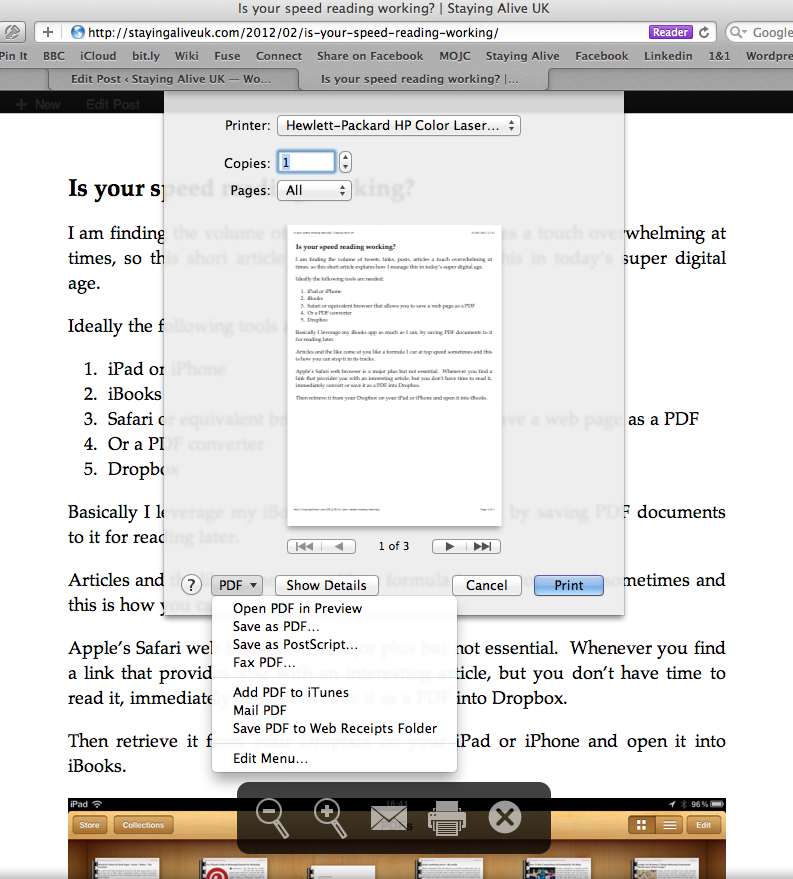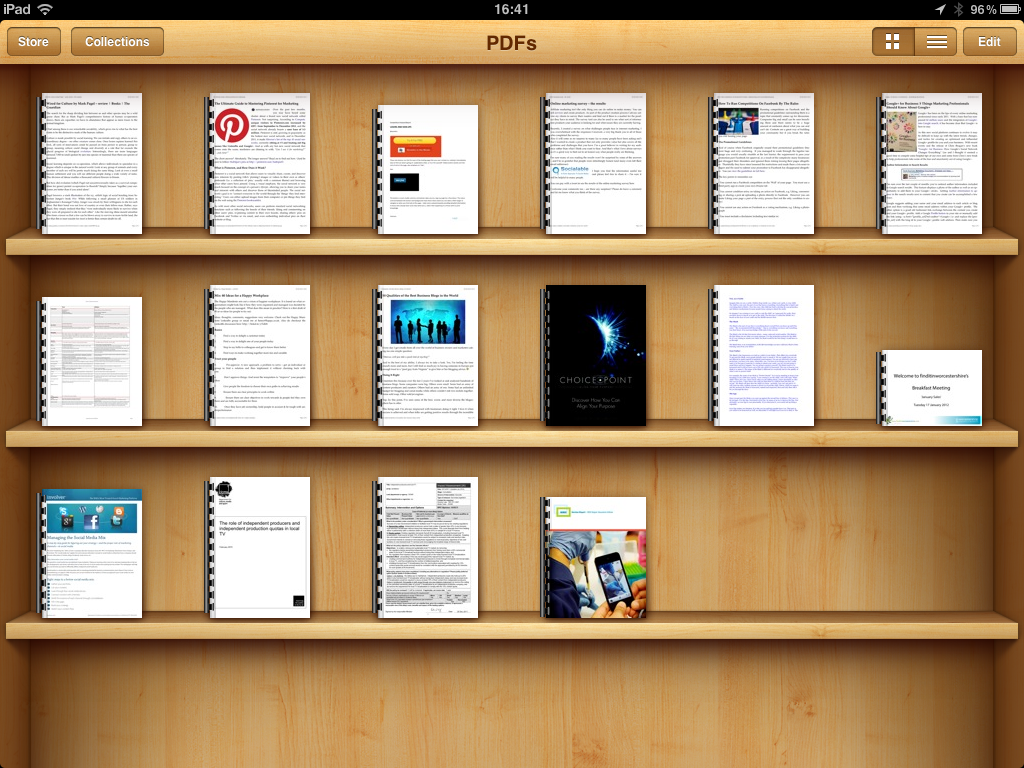Email was invented in 1971 and became popular during the late 90's. We've been using it seriously for 20+ years. Some of you reading this will remember how amazing it was when we all started using it. Remember your first email address? Mine was with Yahoo! Millennials will snigger at this, I know they will, some haven't even got an email address!
And although we've had enormous change with email, most of us are still basically using it for the same purpose. To send messages, share files, photos and opinions.
And of course with all new inventions email soon became a method for spammers to hack servers and send us all emails promoting goods and services we weren't looking for. (SPAM)
And then there is the ’Email Newsletter’. If by chance you shared your email address on a website or purchased some goods online your email address could be added to a list. The owner of the list could then keep you informed of their news, which often included promoting their goods and services too. You may have even wanted those newsletters, but now they are a pest!
Over time newsletter clients, like Constant Contact, Mailchimp and others started to emerge and provided some rules around uploading email addresses. One of those rules would be obtaining authorisation from the email owner before adding them to a list. However as long as you tick the box that confirms you have authorisation, they allow you to upload your list. And then you can legitimately email (SPAM) your contacts.
Let’s not forget Data Protection in Europe. The Data Protection Directive (officially Directive 95/46/EC on the protection of individuals with regard to the processing of personal data and on the free movement of such data) is a European Union directive and was adopted in 1995. It regulates the processing of personal data within the European Union. In essence it means when you hold personal data, like an email address, you must have obtained it with the owners permission and provide any recipient of your email newsletter the opportunity to unsubscribe.
Nowadays the best process for obtaining authorisation for using someone’s email address is using a double opt-in process. That means the email owner has to confirm authorisation and knows without a doubt that they are being added to an email list. This is by far the best process in my view. BUT many don’t bother with this process.
With the creation of LinkedIn, it means that your connections have access to your email address. They can download your email address to add to their email list whether they have your authorisation or not and then start to email you their newsletters (SPAM).
I've been unsubscribing from newsletters for over 4 years and receive very few unsolicited emails these days. However I still receive around 4-6 newsletters I never signed up for per month. Plus the instances of poor practices in those emails, where you are unable to unsubscribe seems to occur more often. I send those senders a polite email to ask how I got added and ask to be unsubscribed. Below is the text of a recent (March 2016) email I sent to the sender of an unsolicited email I received.
You really need to be considering your ‘Email Newsletter Strategy’. Are you really adding value to your readers or are you promoting, selling, funnelling and spamming?
Now let’s discuss the ‘email signature’. Have you got one? How much detail do you think should be in your email signature and do you really believe that the receiver needs all that detail? The chances are that the receiver is already known to you, you’re probably already connected on Social Media somewhere and they more than likely have your business card. Here are some of the crazy things I see in email signatures:
- Email address. Why? They have just received your email with your email address on it, why on earth do they need it in your email signature as well?
- Website address. If you using a business email address then they will already know the domain address of your website, after all it’s in your email address. And if it’s personal email then you won’t need to share a website address do you? And small businesses who still use a free personal email address should really examine what they are doing to their Brand.
- All your Social Media channels. Do you really think they have time to click through to all those URL’s and connect or follow you there? If they were so interested in you, they would take the time to search for you on those channels anyway and may have already done so before they even get an email from you. The chances are that you’ve also already done this and at least have connected with them on LinkedIn. It’s totally redundant and just lengthens the email message.
- Logos and Images. And although Broadband speed has increased and mobile internet is getting faster, attaching images to your email is totally impractical. Branding I hear you say? Rubbish! Have you seen how your Brand gets destroyed when you start emailing back and forth and all those images get removed, scrunched and destroyed in some way. The email thread is a mess, more scrolling required to discover the real text that has to be read and with all those missing image links, additional contact information the important text can easily be missed, often resulting in quotes like ‘I never saw that message’. I’m not surprised, it was hidden in between unnecessary promotional nonsense.
- Street address. Seriously? You’re kidding right? Why would they need that in an email? You are emailing each other, not sending each other postcards. If you do have to visit you almost always look up their website and find out directions and jump on to Google Maps.
- Disclaimer. Thank you 80’s and 90’s lawyers! They all scared the s..t out of us, because we weren’t sending letters any longer and it was entirely possible that your email could end up arriving somewhere else and then you’ve said something so awful that they could take you to court. OMG! The disclaimer is often 3 times longer than your actual email message. And you really think it protects you? The receiver has nothing better to do then read your disclaimer every time they receive an email from you? (Raising my eyes to heaven)
- Environmental Statement about printing. How many folks actually spend time printing emails out, apart from lawyers? Enough said.
If this sparked any interest, you can read this thought-provoking article by Kevin Zawacki @kevinzawacki on Slate.com http://slate.me/1REJekw
This is 2016 and none of the above is needed any longer. Let’s use email as it was intended. Keep it basic, short and to the point. and Don’t copy the world to ‘cover your a..’.
Reduce your email signature to your mobile number and one keyword for search. After all you don’t have a massive email signature on Twitter, Facebook, LinkedIn, Pinterest, Instagram, YouTube etc. The world is changing, please join me in spreading the word about email signatures and get them reduced to just two bits of information.
Email won’t exist forever, certainly unlikely in larger organisation. There are now other products on the market who make internal communication more productive and simpler. Email is likely going to be reinvented by Social Media and Messaging apps like Slack, Asana, Trello, Yammer and others? I’m looking forward to it, because it could signal the end of email as we know it. Yippee, no more spamming!
So let’s ask the question again. ‘Is Email Enhancing or Destroying Your Reputation?’
Answers on a postcard please! Just kidding, comments below please or via email if you wish, michael@guess the domain.com? No seriously, I need you to guess the domain. For starters it's easy if you did some research and secondly, I would like to avoid the spiders adding me to a list.









